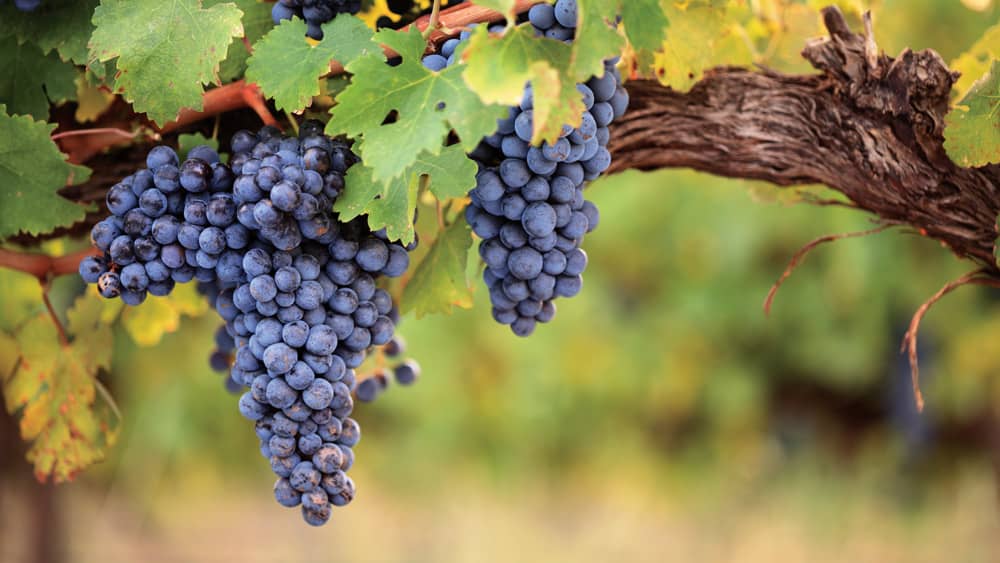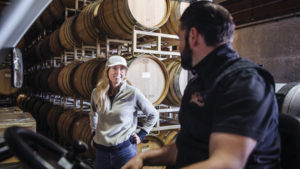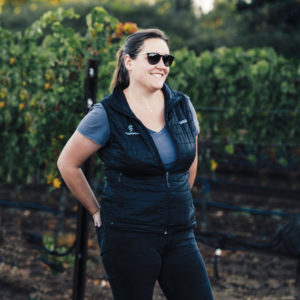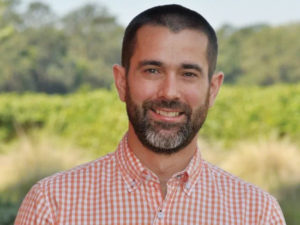
Science is a given in winemaking, a tool in the hands of the winemaker to help them achieve success or artistic objectives. For each winemaker, the journey is different in terms of how they weigh and prioritize each component and based on what limitations or outside factors may be at play. One thing every winemaker Northbay biz spoke to had in common was that all believe winemaking encompasses both and that there are many elements of individual expression involved in the winemaking process. Though the level to which each winemaker exercises this individual expression varies widely.
To what degree winemaking is science depends on a winemaker’s objectives. If producers are working to create wines that match specific brands, house styles or a specific consumer objective, they can use science and technology to help them achieve their very specific goals. Many of the widely-acknowledged great estates and wineries of the world use this approach. Take some of the great Champagne houses, for instance, which develop proprietary recipes and adhere to the same recipes year in and year out to ensure that their wines can be relied on to taste the same to guarantee commercial success. The same may be said of many new-world wineries. Winemakers are required to adhere to certain winemaking practices or protocol that rarely change unless nature makes change mandatory. Then, the changes include tweaking components of the wine until it most closely resembles its pre-ordained profile.
On the other hand, there are wineries and winemakers that take a different approach—letting nature, experience or their own artistic vision guide them—relying on science to guide and support, but not dictate.

Bella Union winemaker Brooke Bobyak Price sees successful winemaking as “leaning more towards art and intuition [than science],” saying that “science is a useful tool to back up decisions while making wine…the numbers assist but by no means dictate the wines we are making. For instance, anything from walking the vineyards to making my pick of grapes based on the appearance of the vines to crafting a creative blend are artistically and intuition driven decisions.”
Supporting the notion that science plays an essential but minority role in winemaking, Agostino Gamba of Gamba Vineyards and Winery posits that “winemaking is a science-based exercise that is beautifully wrapped in an abundance of individual expression of creative artistry. If I were pressed to offer the notion of winemaking as science vs. art expressed as a percentage, I would say that winemaking is 15 percent to 20 percent solid science, with the vast majority being an expression of pure art directed at the hand of the winemaker.”
Consumer perspective
The scientific aspects of winemaking, the microbiology and chemistry are undeniable. Without a solid grasp of the science, a winemaker cannot hope to succeed. Without the right ingredients and chemical reactions, wine cannot be made.
Many aspects of growing winegrapes and winemaking have evolved and changed significantly over time, for the better. Advancements in science and technology offer producers better equipment, better access to data, more accurate testing and more advanced technology that offers a much higher level of flexibility. The combination of scientific knowledge and skill along with better farming practices, more advanced technology and creative artistic expression are what work in concert to produce the most compelling wines in the world.
Yet the aspects of winemaking that are the most interesting to consumers and the most focused on in the media are the creative aspects, agricultural practices and the geography. The vineyards that produced the grapes that compose a recognizably great wine (what makes them unique), the farming practices in those vineyards, the choices made by the winemaker in the cellar (during fermentation, blending, and aging…), etc.

Nick Goldschmidt of Goldschmidt Vineyards says, “I am a big advocate of the science.” He holds degrees are in organics, viticulture and enology, and considers himself a “plant scientist with a winemaking bent.” He adds, “Science was always my focus until 2008, when I went out on my own, making wine under Goldschmidt Vineyards.” He also runs Alpine Engineering solutions, an innovation company focused in wine.
He sees winemaking as “clearly both a science and an art.” He says, “Consumers care more and more about the environment and the way we farm, so that has to be part of the stories we tell.” This means making informed decisions about terroir and irrigation. “Another part that is often over looked is culture,” he says. “I’m a Kiwi who trained in Australia and has lived and worked in California (as well as regularly in South America) now for 35 years. I carry the memory and culture of the people/places and stories that I have heard and studied. All of this history, culture, and experience affects our winemaking.”
The processes
The fermentation and maceration processes are key to winemaking, combining science and art.
The fermentation stage of the winemaking process is clearly rooted firmly in chemistry. Without the right formula and conditions, alcohol cannot be produced. In every fermentation there are certain ‘ingredients’ (yeast and grape sugar) and conditions that are mandatory in order for the fermentation process to occur and alcohol to be created.
But within this formula or during this stage of fermentation, there are still choices that a winemaker can make. Such as which yeasts to use. Do they use native yeasts? Do they inoculate with a specific type of yeast? Which yeasts will either work better with the conditions present or help the winemaker achieve certain results? What temperature will they ferment at? Lower or higher? Do they want a shorter or longer fermentation? Even during what may be seen as one of the most basic scientific stages of winemaking, there is still much that is left up to the winemaker to decide.
For some winemakers, the fermentation process may be cut and dry—following an exact formula and procedures or processes laid out by the winery in order to adhere to brand guidelines. In essence, this process can be as simple as following an exact recipe in each and every case. For other winemakers, especially those making wines for their own brands, there is more flexibility to make creative decisions (such as testing out a new yeast strain, lowering the temperature and lengthening the timeframe of a fermentation, changing the percentage of open tank and closed tanks, etc.).
With maceration, there are many elements that are open to creative and individual expression, especially with red wines, as these are the winegrapes that spend time on skins. While this stage of the winemaking process isn’t given as much attention when it comes to communicating winemaking processes to consumers, there are so many different decisions a winemaker can make. For example, when it comes to how much time a wine spends on the skins, how much or little extraction a wine undergoes, and at what temperatures these extractions occur.
Technology can play a huge role during the maceration process, especially with some of the advancements and machinery that has been developed over the past few years. Advancements allow for more frequent and less labor intensive extraction, but even when the most advanced technology is employed, it’s still the winemaker who is making the decision on how much, how little, how long, at what temperatures, etc. Some world-class wines (and the winemakers who make them) are best known for characteristics acquired during the maceration and extraction process (weight, intensity, tannins, viscosity, etc.) while other brand and winemakers using fruit from the same vineyards but employing different maceration and extraction practices produce a completely different style of wine.
In short, with maceration there is some science involved-namely dictating how much time juice must sit on skins to develop color and tannins and at what speed this occurs and what level those tannins are extracted at different temperatures, but almost everything during this stage of the winemaking process is open to interpretation or manipulation.
Blending and Aging
Blending and aging may be the most romanticized aspects of the winemaking process when it comes to what information is conveyed and how it is conveyed to consumers. From the prevalence in modern day tasting rooms of communicating the type of oak and amount of time in oak to the popular blending seminars or classes hosted at wineries, there’s no doubt that blending and aging are seen as artistry. Yet, there are still scientific and regulatory elements involved in creating wine blends and aging wines.
With blending for instance, there are legal requirements that a wine must meet to hold certain designations. Those designations refer to the vintage, varietals, appellation, sub-appellation and the percentage requirements a wine must meet to use certain designations. There are also considerations involved in choosing which specific wines or how much of each wine will go into a blend that go beyond personal preference or artistic expression such as which varietals will add the needed color, tannin, body, or needed alcohol level (to increase or temper the overall alcohol level). These components can more easily be defined and effectively integrated through testing in addition to tasting.
On the other hand, there’s a lot of room for independent and artistic expression when it comes to selecting the right wines that will go into a blend with “right” being defined either by the winemaker’s personal taste, by a defined set of criteria or a certain profile a winemaker is trying to achieve based on a ‘house style’ or market demands, etc.
With aging, there is even more room for creativity and independent expression as there are no rules or regulations that must be followed except for the potential guidelines or ‘recipe’ a specific brand may ask non-owner winemakers to adhere to. Yet there are economic factors that play a role when it comes to decisions about barrel treatment and aging. While the choice of barrel producer, type of oak, toast level, what percentage of neutral and/or new oak to use and the amount of time a wine will spend in the barrel and the bottle before being released are technically up to the winemaker, winery, or brand, the costs associated set certain inherent limits.
With aging there is also the need for a winemaker to understand the purpose of the final wine they are blending to create. Is it a wine that is meant to age for many years, or one that should be consumed within a couple of years? What amount of time in the barrel and bottle can they afford? What product price can the market bear? What price considerations do they need to factor in to their decisions?

Understanding what they want out of the final wine—what will be enjoyed in the glass at its time of release or within the recommended timeframe—sets the parameters for what final blend a winemaker will choose. Last but not least, there is, of course, the element of taste. Much of what a winemaker decides when it comes to what tastes good is based on their own palate or personal tastes and the final objective or style they are trying to achieve. For some winemakers there is room for significant creativity and individual expression at this stage, while for others the style and flavor profile may be pre-determined.
Almacerro winemaker Matilda Scott posits that while ‘winemaking is both science and art’ and that ‘science gets you to a place where the art can then take over’ there is also no denying the artistry of Mother Nature. “It’s simply stunning,” Scott says.”Similarly, the work of a blending Maestro is awe-inspiring art. It can’t be mistaken for science.”
Winemaking in education
Winemaking in education is treated as a science. This isn’t a surprise—agriculture, viticulture and farming are all treated as sciences in the education system.
From a business standpoint, a winemaker’s education must be ‘rooted in understanding the science of the process (e.g. biology, chemistry, engineering) so they can ‘reproducibly make a quality product that meets consumer expectations, can monitor and properly respond to unforeseen issues during winemaking, and manage the advanced technologies commonly used within the industry’ says Ben Montpetit, associate professor of yeast biology in the viticulture and enology department at the University of California, Davis.
Is it possible to academically train someone in the art of winemaking?

“If an educational institution was to offer a degree in winemaking that was a BA, I suspect the focus would not be on making a consumer product but rather how this product is intertwined with society and culture,” says Montpetit. In other words, winemaking would not be about a product that could be sold, but rather making wine to explore how we interact with it—how it makes us feel, how it connects us to family, friends, nature, how it has influenced human history and society and how changing any part of the process or the product impacts our thoughts, emotions and interactions with it or each other. Hence, the coursework would be wide ranging, and I imagine would include anthropology, classical studies, fine arts, history, philosophy, political science, psychology, sociology and social justice.
When it comes to consumers, says Ben, “winemaking is seen as an art that encompasses history and ties into important aspects of culture. And this is what is attractive to wine drinkers and why they want to visit a winery, meet the people and see where the grapes come from.”
As such, perhaps the idea of a dual degree isn’t such a crazy one.
A fluid process
Whether winemaking is more of an art or science can be—and continues to be—widely debated and largely dependent upon the individual winemaker, the winery and brand, and other extenuating circumstances. One thing that is rarely contested, however, is that winemaking is art.
Art and science are forever tied, intertwined and a fluid endeavor. They play a constantly changing yet vital role, in lesser or greater degrees, depending on a number of conditional variables.
Author
-

Brooke Herron is a Sonoma County based online marketing and sales strategy consultant, online marketing educator, and freelance writer. She has a 20 year background in the wine industry. Her work has been featured in a variety of print and digital publications including Decanter Magazine, Fodors Travel, Edible Marin and Wine Country, SommJournal, Wine Industry Advisor, Cidercraft Magazine, NorthWest Travel Magazine, sonoma.com, and sonomacounty.com.
View all posts



